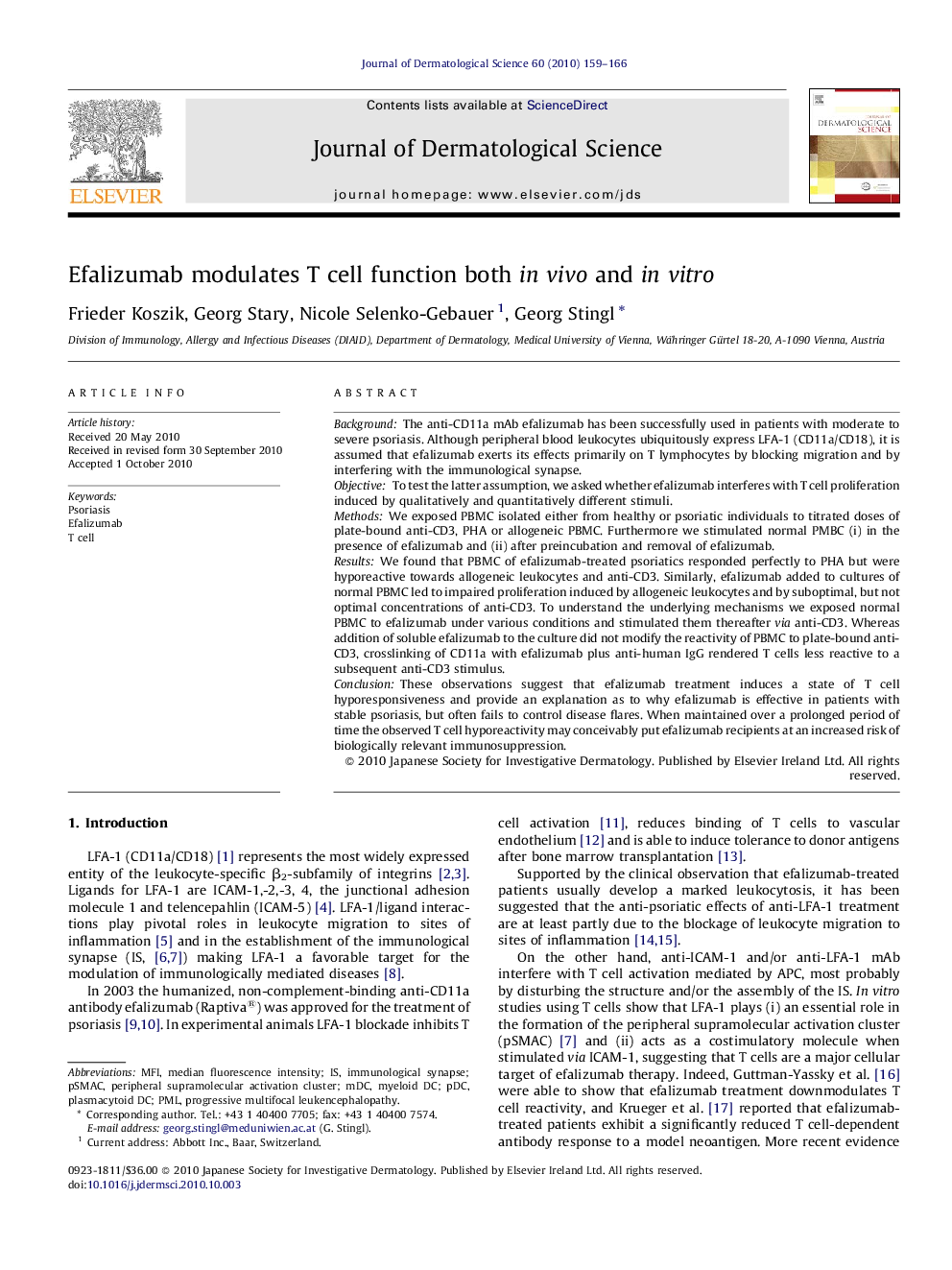| Article ID | Journal | Published Year | Pages | File Type |
|---|---|---|---|---|
| 3213389 | Journal of Dermatological Science | 2010 | 8 Pages |
BackgroundThe anti-CD11a mAb efalizumab has been successfully used in patients with moderate to severe psoriasis. Although peripheral blood leukocytes ubiquitously express LFA-1 (CD11a/CD18), it is assumed that efalizumab exerts its effects primarily on T lymphocytes by blocking migration and by interfering with the immunological synapse.ObjectiveTo test the latter assumption, we asked whether efalizumab interferes with T cell proliferation induced by qualitatively and quantitatively different stimuli.MethodsWe exposed PBMC isolated either from healthy or psoriatic individuals to titrated doses of plate-bound anti-CD3, PHA or allogeneic PBMC. Furthermore we stimulated normal PMBC (i) in the presence of efalizumab and (ii) after preincubation and removal of efalizumab.ResultsWe found that PBMC of efalizumab-treated psoriatics responded perfectly to PHA but were hyporeactive towards allogeneic leukocytes and anti-CD3. Similarly, efalizumab added to cultures of normal PBMC led to impaired proliferation induced by allogeneic leukocytes and by suboptimal, but not optimal concentrations of anti-CD3. To understand the underlying mechanisms we exposed normal PBMC to efalizumab under various conditions and stimulated them thereafter via anti-CD3. Whereas addition of soluble efalizumab to the culture did not modify the reactivity of PBMC to plate-bound anti-CD3, crosslinking of CD11a with efalizumab plus anti-human IgG rendered T cells less reactive to a subsequent anti-CD3 stimulus.ConclusionThese observations suggest that efalizumab treatment induces a state of T cell hyporesponsiveness and provide an explanation as to why efalizumab is effective in patients with stable psoriasis, but often fails to control disease flares. When maintained over a prolonged period of time the observed T cell hyporeactivity may conceivably put efalizumab recipients at an increased risk of biologically relevant immunosuppression.
